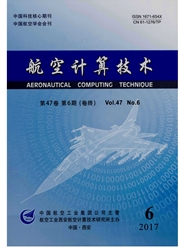

 中文摘要:
中文摘要:
采用两套有代表性的计算网格,研究了流动转捩对高升力构型数值模拟准度的影响。通过对NASA高升力梯形翼构型(NASA-Trap Wing)大攻角范围全湍流模拟、固定转捩位置模拟和自由转捩模拟大量数据的对比分析,表明与实验参考值和全湍流模拟结果相比,考虑流动转捩影响可以有效改善NASA-Trap Wing标模的气动特性预测结果,尤其是俯仰力矩系数;不同方法模拟得到的机翼表面压力分布差别不大,但转捩模型对近壁区速度剖面的预测结果更接近实验值,且减少/延迟了襟翼上表面的流动分离;计算网格对于失速攻角附近计算结果影响较大。
 英文摘要:
英文摘要:
Two representative grids were adapted to study flow transition effect on numerical simulation accuracy of high lift configuration. Comparative analysis was carried out with vast data obtained from numerical simulation of NASA- Trap Wing at large attack range,using three approaches: fully turbulent simulation,transition simulation by Shear Stress Transport( SST) turbulence model coupled with fixed transition and the Langtry- Menter Gamma- Theta transition model. The findings suggest that comparing to results of referred experiment and fully turbulent simulation,accounting for transition tends to effectively improve the predicted aerodynamic performance of NASA- Trap Wing,especially the pitching moment; there are rather small differences between the surface pressure distributions obtained by different simulation methods,whereas with transition model,an improvement is observed in the prediction of near- wall velocity profiles and upper surface flap separation is reduced. Computational grid has great effect on the computed results around the stall angle of attack.
 同期刊论文项目
同期刊论文项目
 同项目期刊论文
同项目期刊论文
 期刊信息
期刊信息
